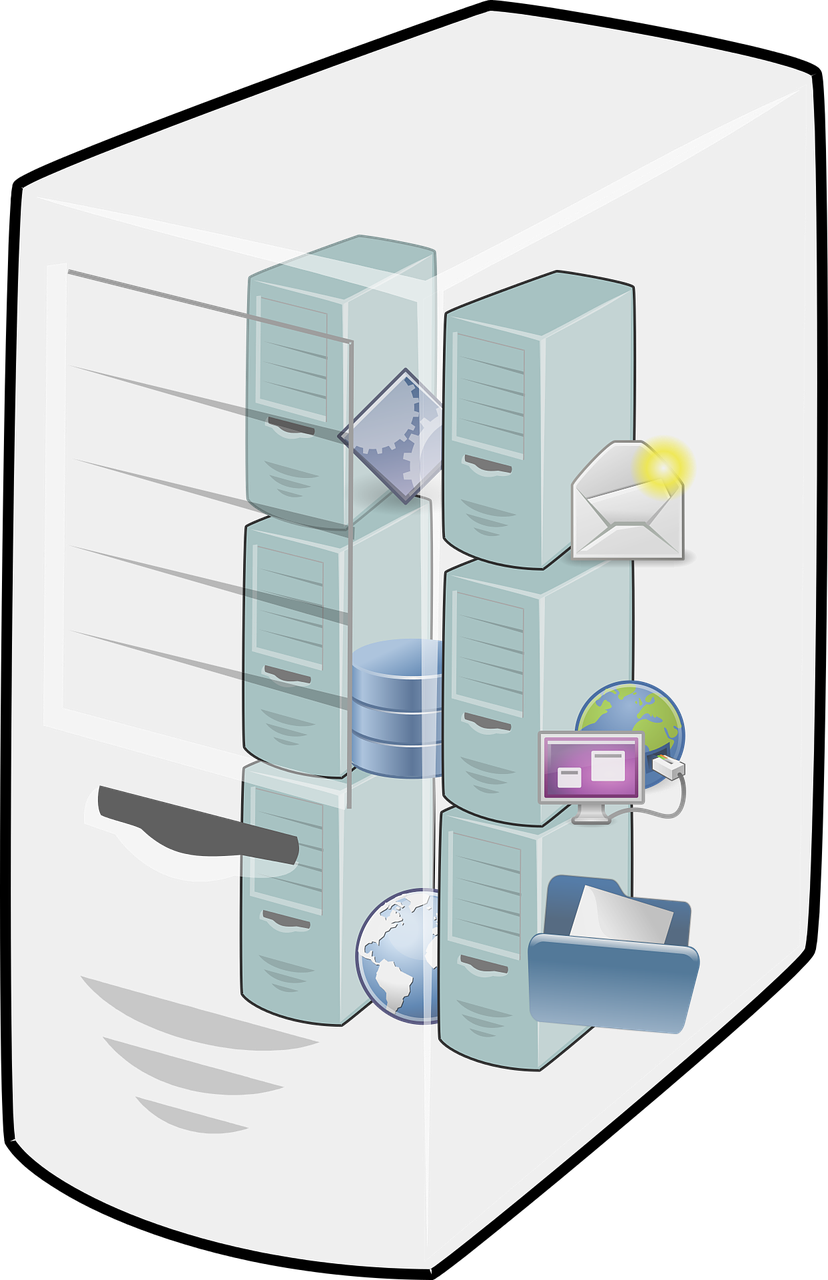Table of Contents
Picture Archiving and Communication System (PACS)
Introduction to PACS:
Picture Archiving and Communication System (PACS) is a comprehensive technology solution used in healthcare to digitally acquire, store, retrieve, and distribute medical images and related patient information. PACS has revolutionized how images, such as X-rays, MRIs, CT scans, and ultrasound images, are managed, allowing for more efficient and cost-effective healthcare delivery. In this explanation, we will delve into the components, benefits, and challenges of PACS's role in modern healthcare.
Components of PACS:
A typical PACS comprises several vital components that work together to streamline the management of medical images and data:
Image Acquisition: This is the initial step where various imaging devices, such as X-ray machines or MRI scanners, capture digital images. These images are then transmitted to the PACS.
Image Storage: The PACS stores the digital images in a secure and centralized repository. These images are typically stored in a standardized format, such as DICOM (Digital Imaging and Communications in Medicch), a widely accepted format for medical images.
Image Retrieval: Healthcare professionals can access stored images and patient data from the PACS. This retrieval can happen at various locations within the healthcare facility or remotely, making it convenient for physicians and specialists to review images.
Image Viewing: PACS provides specialized viewing software that enables healthcare professionals to interpret and diagnose medical conditions based on the images. This software often includes tools for image manipulation, annotation, and comparison.
Image Distribution: PACS allows for the efficient sharing and distribution of images and patient data among authorized users in the healthcare facility and across different locations. This facilitates collaboration among healthcare providers.
Data Backup and Redundancy: To ensure data integrity and availability, PACS systems typically incorporate robust backup and redundancy mechanisms. This safeguards patient information against data loss.
Integration with Electronic Health Records (EHR): Many PACS systems can integrate with EHR systems, allowing seamless access to patient data and images from a single platform. This integration enhances clinical workflows and improves patient care.
Benefits of PACS:
PACS offers numerous advantages to healthcare organizations, medical professionals, and patients:
Enhanced Efficiency: PACS streamlines the image acquisition and retrieval process, reducing the time and effort required to access and review medical images.
Improved Diagnosis: Physicians can make quicker and more accurate diagnoses due to easy access to high-quality imagelated patient information.
Cost Savings: Digital images eliminate the need for film processing and storing operational costs for healthcare facilities.
Remote Access: PACS enables remote access to images and patient data, allowing specialists to consult on cases without physical presence.
Better Patient Care: Faster access to diagnostic information that patients receive timely and appropriate treatment.
Data Security: PACS systems incorporate robust security features to protect patient information and ensure compliance with privacy regulations like HIPAA (Health Insurance Portability and Accountability Act).
Challenges of PACS: While PACS has transformed healthcare imaging, it also presents specific challenges:
Initial Implementation Costs: Setting up a PACS system can be expensive because of hardware, software, and staff training.
Interoperability: Compatibility issues may arise when integrating PACS with other healthcare systems or sharing data with external organizations.
Data Volume: The increasing volume of medical imaging data requires scalable and high-performance storage solutions.
Data Management: Ensuring data integrity, security, and long-term storage can be complex and resource-intensive.
User Training: Healthcare professionals need to be trained in using PACS software, which can be time-consuming.
Maintenance and Upkeep: PACS systems require regular maintenance, updates, and technical support to ensure optimal performance.
The Role of PACS in Modern Healthcare:
PACS plays a pivotal role in modern healthcare in various ways:
Streamlined Workflow: It significantly streamlines the workflow of healthcare providers by eliminating the need for physical film and facilitating rapid image retrieval.
Remote Consultation: PACS enables specialists and radiologists to remotely review images, making it easier to access expert opinions.
Research and Education: PACS data can be used for medical research, education, and training purposes, enhancing the skills and knowledge of healthcare professionals.
Telemedicine: In telemedicine, PACS facilitates sharing of images between patients and remote healthcare providers for consultation and diagnosis.
Continuity of Care: Integration with EHR systems ensures that patient records and images are easily accessible across different healthcare settings, promoting continuity of care.
Data Analytics: PACS data can be analyzed to identify trends, improve diagnostic accuracy, and enhance healthcare delivery.
Hybrid Cloud:
Introduction to Hybrid Cloud: A hybrid cloud is a cloud computing environment that combines elements of both public and private clouds. It allows organizations to leverage the benefits of both cloud models while addressing specific requirements and concerns related to data privacy, security, and control. In this explanation, we'll explore the concept of hybrid clouds, their components, benefits, challenges, and use cases.
Components of a Hybrid Cloud:
A typical hybrid cloud architecture consists of the following components:
Public Cloud: This is a cloud infrastructure provided by third-party cloud service providers, such as Amazon Web Services (AWS), Microsoft Azure, or Google Cloud Platform (GCP). Public clouds offer scalable resources and services accessible over the Internet.
Private Cloud: A private cloud is an infrastructure owned and operated by an organization for its exclusive use. It can be located on-premises or hosted by a third-party provider. Private clouds offer greater control and security over data and resources.
Hybrid Cloud Connectivity: The hybrid cloud relies on secure and robust connectivity between the public and private cloud environments. This can be achieved through dedicated network connections, virtual private networks (VPNs), or hybrid cloud management platforms.
Orchestration and Management Tools: Organizations use orchestration and management tools to manage resources and workloads across both cloud environments or provide a unified view and control over the hybrid infrastructure.
Benefits of a Hybrid Cloud:
Hybrid clouds offer several advantages to organizations:
Flexibility: Organizations can scale their computing resources up or down as needed, leveraging the agility of public clouds while maintaining critical workloads on a private cloud for better control.
Cost Optimization: Hybrid cloud strategies allow organizations to allocate workloads to the most cost-effective cloud environment, optimizing spending.
Security and Compliance: Sensitive data and applications can be kept within the secure confines of a private cloud, while non-sensitive workloads benefit from the scalability of public clouds.
Data Redundancy and Backup: Hybrid clouds enable data redundancy and backup across multiple cloud environments, reducing the risk of data loss.
Disaster Recovery: Organizations can implement robust disaster recovery solutions by replicating critical data and applications between public and private clouds.
Global Reach: Public clouds often have data centers in multiple regions, providing a global reach that can benefit organizations with an international presence.
Challenges of a Hybrid Cloud: While hybrid clouds offer numerous advantages, they also pose specific challenges:
Complexity: Managing and integrating two separate cloud environments can be complex, requiring specialized expertise and tools.
Cost Management: Organizations must carefully monitor and manage costs, as the flexibility of hybrid clouds can lead to unexpected expenses.
Security Concerns: Ensuring consistent security and compliance across public and private clouds is a significant challenge.
Data Movement and Latency: Transferring data between public and private clouds can result in latency and performance issues.
Vendor Lock-In: Organizations must rely on a single cloud service provider to maintain flexibility.
Integration and Compatibility: Ensuring compatibility and seamless integration between cloud environments can be challenging.
Use Cases of Hybrid Cloud: Hybrid clouds are well-suited for various use cases across industries:
Data Backup and Recovery: Organizations can use public clouds for data b and recovery, while critical data remains on a private cloud.
Scalable Web Applications: Hybrid clouds allow businesses to handle fluctuating web traffic by scaling applications on a public cloud while maintaining the core application on a private cloud.
DevOps and Testing: Development and testing environments can be set up on public clouds to save costs and resources, while production environments remain on private clouds.
Compliance and Data Governance: Sensitive data subject to strict regulatory compliance can be kept in a private cloud, while less sensitive data is processed in a public cloud.
Disaster Recovery: Hybrid clouds provide robust disaster recovery solutions, ensuring data and applications can be quickly restored in case of a disaster.
Hybrid Applications: Applications that require a mix of on-premises and cloud resources benefit from the hybrid cloud's flexibility.
In conclusion, PACS and hybrid clouds represent two distinct technological concepts with significant implications for healthcare and broader IT infrastructure; resp has revolutionized healthcare imaging by digitizing and streamlining the management of medical images. At the same time,d clouds offer organizations flexibility, cost optimization, and security by combining the advantages of both public and private cloud environments. Understanding these concepts and their applications is crucial for healthcare professionals and IT leaders to harness their benefits in addressing associated challenges.


